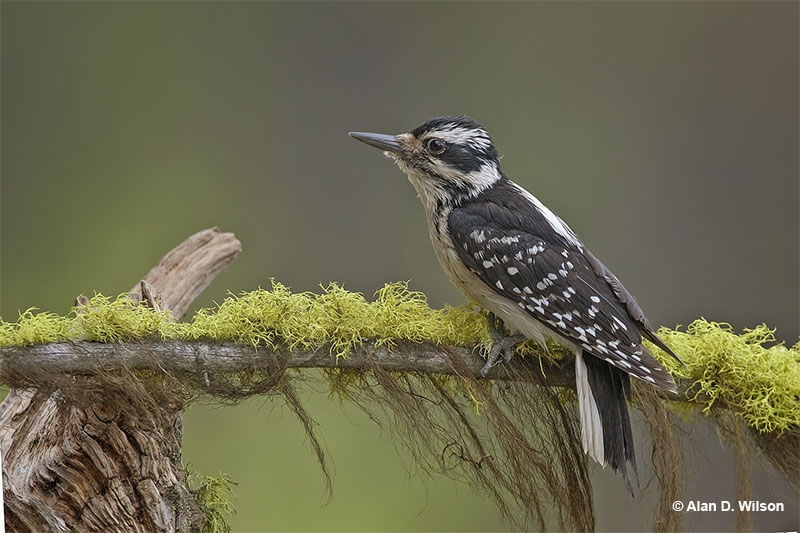
Woodpeckers are a fascinating family of birds that are known for their unique abilities, such as their ability to drum on trees and their specialized beaks for excavating wood.
Female woodpeckers look a lot like their male counterparts, but they generally have less red on the head. As with male woodpeckers, female woodpeckers have specialized neck muscles that help them rapidly peck for up to 20 times a second.
This type of pecking is known as “drilling” and is so rapid and forceful, if female and male woodpeckers did not have extra muscles to cushion their skulls, they would knock themselves out.
On this page
Female vs Male Woodpeckers
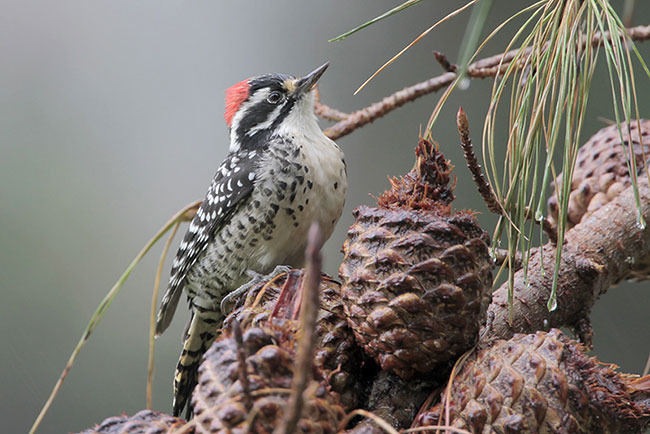
Male woodpeckers are easy to identify by the red patch on their heads.
Female and male woodpeckers of most species look very similar but with a close look, we can tell them apart. For birds like the familiar Downy Woodpecker, Red-bellied Woodpecker, and many other species, the main difference is the amount of red on the head.
Related: Types of Woodpeckers in North America
Males often have red markings on the head while female woodpeckers have very little red or no red at all. Two exceptions are the Red-headed Woodpecker and the Williamson’s Sapsucker.
In these species, the female Red-headed Woodpecker looks exactly like the male, whereas the female Williamson’s Sapsucker looks so different from her male counterpart, she looks like a completely different species.
Female Woodpecker Scientific Information
Some comparisons between male and female woodpeckers, with measurements from one of the most common species, the Downy Woodpecker.
| Male | Female | |
| Size | Usually the same size but can be slightly larger, 6.75 inches in length. Wingspan of 10 inches. Their average weight is 27 grams. | Can be slightly smaller but usually 6.75 inches in length. Wingspan of 10 inches. The tails of females are slightly longer than the males. Their average weight is 27 grams. |
| Plumage | Patterned black and white above, white below. The main difference is a small, bright red spot on the back of the crown of the head. | Patterned black and white above, white below. Lacks the red spot on the head. |
| Behaviors | Males defend their territory from other males, especially during the breeding season. | Females defend their territory from other females. |
| Sounds | Males give “pik” calls and a longer, high-pitched, staccato vocalization, more so during nest excavation. | Female woodpeckers make the same sounds as the males but make the longer vocalization less often during nest excavation. |
| Life Expectancy | Around 10 years. | Female woodpeckers may live ten years, they seem to live as long as males. |
Plumage
The female woodpecker looks much like the male but usually has fewer red markings on the head. For example, in the case of the Downy Woodpecker, the female has bold, black and white plumage on the upperparts, and white underparts.
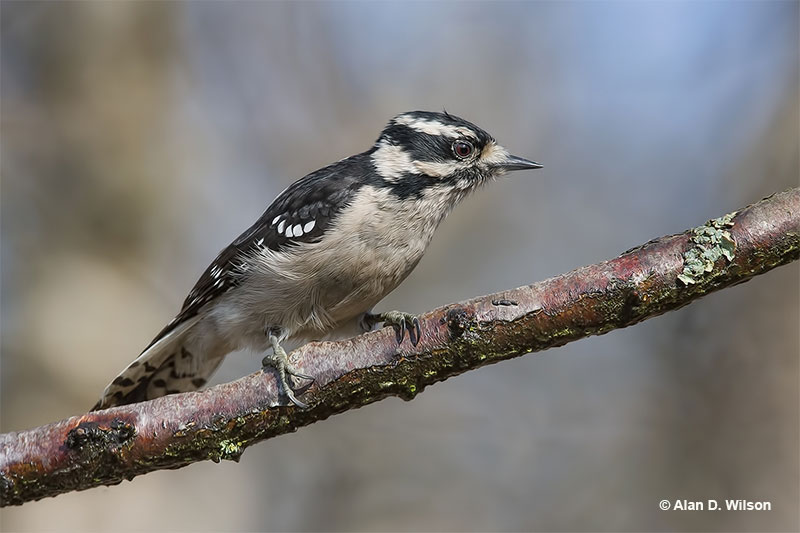
Female woodpeckers have more laid-back plumage and often lack red markings.
She has a black cap, a black and white face, a white patch on the back, white spots in the wings, and white outer tail feathers. The male looks the same but has a small, red spot on the back of the head.
Differences between other male and female woodpeckers are similar but there are exceptions.
Both sexes of the “Yellow-shafted” Northern Flicker have a small red spot on the head but the male has a black mark on the face, the female Williamson’s Sapsucker looks completely different from the male, and the females of Black-backed and American Three-toed Woodpeckers lack the yellow spot on the heads of the males.
Female Woodpecker – Behavior
The behavior of male and female woodpeckers is very similar. Both sexes spend much of their time foraging on trunks and branches for beetles and other food, make drumming sounds to establish and show where their territories are, and make similar calls.
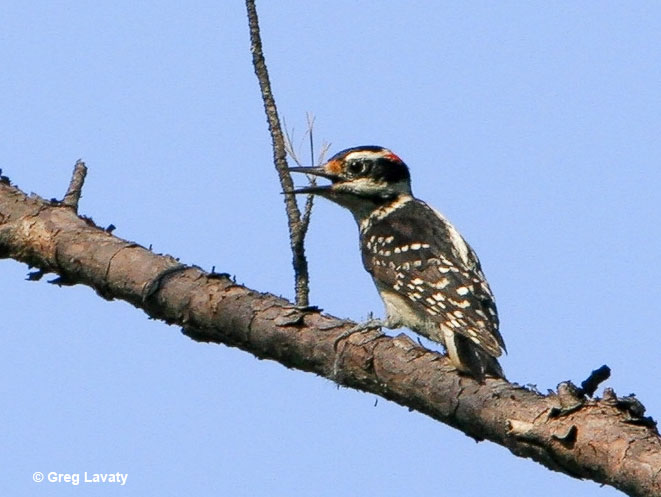
They also both defend their territories from rivals but males chase away other males, and females chase away other female woodpeckers.
Related: Why do woodpeckers peck wood?
Both male and female woodpeckers work together to excavate a nesting hole but the female may have a bigger role in choosing the nesting site. Both sexes also incubate the eggs but the male does all of the incubation at night.
How to Tell a Younger Woodpecker’s Gender?
It can be very difficult to tell the difference between male and female young woodpeckers. In most woodpecker species, the young of male and female birds resemble adults but have duller plumage. Some males also show more red on the head, even as a juvenile, and this is the best way to tell them from female woodpeckers.
For example, in the Downy Woodpecker, young males have some red feathers on the top of the head that extend past the eye.
The juvenile female Downy Woodpecker either lacks red or has a few small red feathers that don’t reach the eye.
Female Woodpecker Lifecycle
Female woodpeckers lay four to six eggs, once per year. The white eggs are laid on a bed of wood chips in a cavity that the male and female woodpecker excavate in the dead part of a tree.
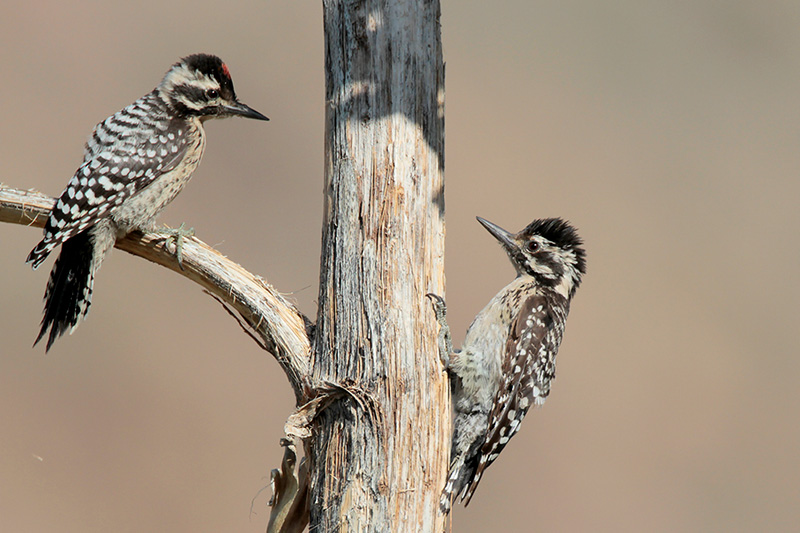
Male and female Ladder-backed Woodpeckers
The male and female incubate for 12 days or two weeks but the male does all of the incubation at night. After hatching, the young are fed larvae and other insects by both sexes for 18 to 21 days.
By this time, they have enough feathers to make a brief flight from the nest but continue to be fed for three weeks. During this time, the parent woodpeckers also lead them to food and warn them of predators.
There aren’t many studies on the lifespans of woodpeckers but some Downy Woodpeckers have lived for nine or ten years. Other larger species may live longer although one study of Pileated Woodpeckers found most adults to be seven or nine years of age.
Female Woodpeckers – Frequently Asked Questions
How do you tell a female woodpecker?
A female woodpecker can be recognized by having little or no red or yellow on her head.
Do female woodpeckers have red heads?
Most female woodpeckers do not have red heads. The female Red-headed Woodpecker is the exception.
Do female woodpeckers make holes?
Yes, female woodpeckers also use their strong beaks to make holes for feeding, roosting, and nesting.
Are woodpeckers good to have around?
Woodpeckers are very beneficial and entertaining birds that eat a lot of insects that harm and kill trees.
Where do woodpeckers sleep?
Woodpeckers sleep in tree cavities that they have excavated.
How do you tell the difference between a male and a female Red-bellied Woodpecker?
The male Red-bellied Woodpecker has red on the entire top of its head, while the female Red-bellied Woodpecker has a gray patch on the top of its head.
Conclusions
Female woodpeckers are very similar to male woodpeckers, both in terms of plumage and behavior. Both sexes forage the same way, work together to excavate a nesting hole, and both take care of the young. However, the females of most woodpecker species have little or no red on their heads.
Since woodpecker species also form long-term pairs, the small details used to recognize a female woodpecker can be noted and compared to the male while they forage or visit a feeder together.

